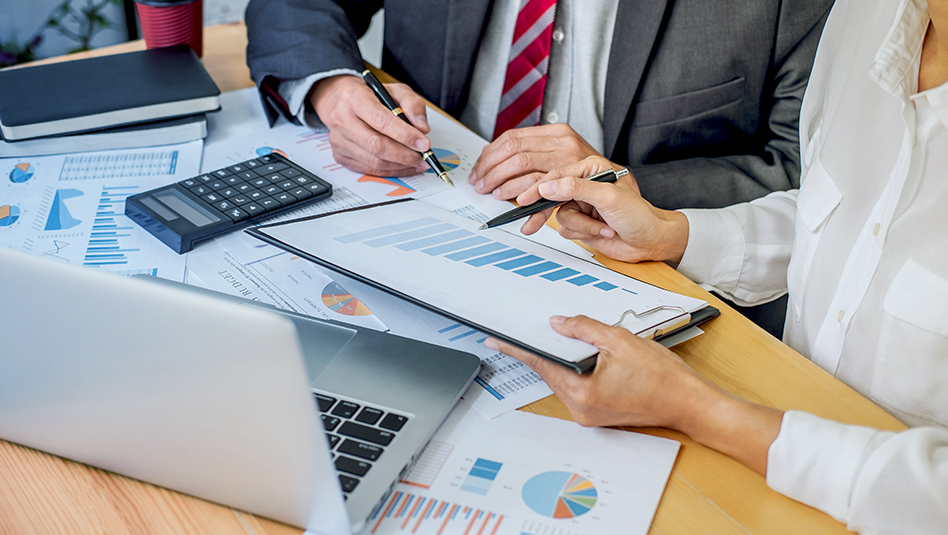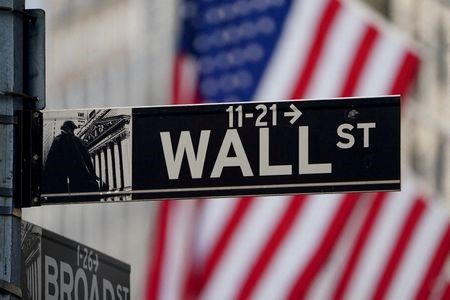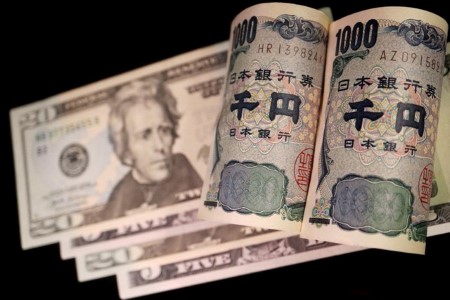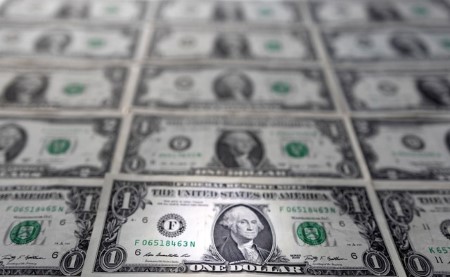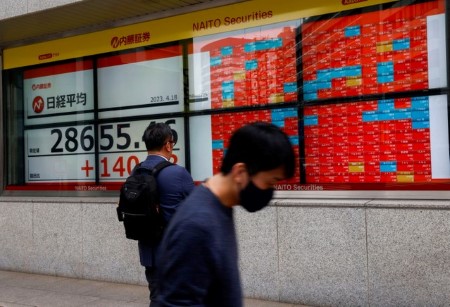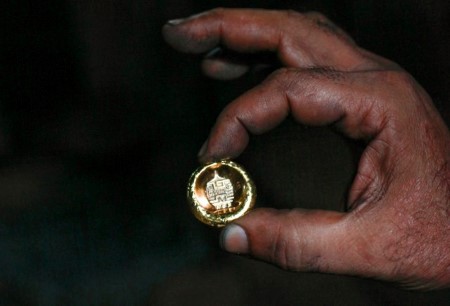NEW YORK, Oct 23 – US stocks wavered to a mixed close on Monday as benchmark US Treasury yields backed down from 5% and investors shifted their focus to this week’s high-profile earnings and closely watched economic data.
The S&P 500 index ended modestly lower, while a host of interest rate-sensitive momentum stocks buoyed the tech-laden Nasdaq Composite Index to a higher close.
The Dow Jones Industrial Average notched its fourth straight daily drop.
“The story continues to be about interest rates, and to some extent switching from ‘higher for longer’ to ‘how much higher for how much longer?'” said Oliver Pursche, senior vice president at Wealthspire Advisors in New York. “The market has accepted the idea that the Fed is not going to lower rates any time soon.”
The tech-heavy Nasdaq racked up the largest gains among Wall Street’s major indexes, while the blue-chip Dow was nominally lower.
The S&P 500 ended below its 200-day moving average, a closely watched technical level, for the second straight session.
The week ahead promises to be eventful for earnings, with reports by nearly one-third of the companies in the S&P 500.
These include megacap momentum drivers, including Microsoft Corp (MSFT), Alphabet Inc (GOOGL), Meta Platforms Inc (META), and Amazon.com (AMZN), along with heavy-hitting industrials such as General Motors Co (GM), Ford Motor Co (F) and Boeing Co (BA).
“With nearly a third of the S&P reporting this week, investors are hoping these ‘magnificent seven’ companies will end up surprising to the upside,” said Sam Stovall, chief investment strategist of CFRA Research in New York.
So far, 86 of the companies in the S&P 500 have posted earnings. Of those, 78% have beaten expectations, LSEG data showed.
Analysts see aggregate S&P 500 earnings for the July-September period growing 1.2% year-on-year, slightly below the 1.6% growth projected at the start of the month, according to LSEG.
The Commerce Department on Thursday will announce third-quarter gross domestic product, seen accelerating to 4.3%. Its wide-ranging Personal Consumption Expenditures (PCE) report, due on Friday, is expected to show annual headline and core inflation cooling down to 3.4% and 3.7%, respectively.
“The Fed wants to slow inflation at a quicker pace than it slows economic growth, and it’s doing so,” Pursche added. “That’s the classic definition of a soft landing.”
Geopolitical turmoil is also on the radar, with market participants looking for potential signs the Israel-Hamas conflict could broaden or escalate.
The Dow Jones Industrial Average fell 190.87 points, or 0.58%, to 32,936.41; the S&P 500 lost 7.12 points, or 0.17%, at 4,217.04; and the Nasdaq Composite added 34.52 points, or 0.27%, at 13,018.33.
Of the 11 major sectors in the S&P 500, communication services notched the biggest gain, while energy shares suffered the largest percentage drop.
Walgreens Boots Alliance (WBA) surged 3.3% after J.P. Morgan upgraded the pharmacy chain operator to “overweight” from “neutral.”
Chevron (CVX) fell 3.7% after the company said it would buy smaller rival Hess Corp (HES) in a USD 53 billion all-stock deal. Hess dipped 1.1%.
Agricultural sciences firm FMC (FMC) tumbled 13.2% after the company lowered its third-quarter guidance.
Declining issues outnumbered advancers on the NYSE by a 2.10-to-1 ratio; on Nasdaq, a 2.04-to-1 ratio favored decliners.
The S&P 500 posted one new 52-week high and 58 new lows; the Nasdaq Composite recorded 14 new highs and 514 new lows.
Volume on US exchanges was 10.80 billion shares, compared with the 10.67 billion average for the full session over the last 20 trading days.
(Reporting by Stephen Culp; Additional reporting by Shubham Batra and Shashwat Chauhan in Bengaluru; Editing by Richard Chang)







 DOWNLOAD
DOWNLOAD

